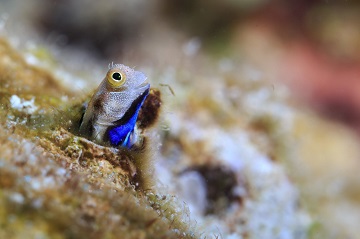601221 reef snacks.jpg

A bluebelly blenny (Alloblennius pictus) warily peeks out of its hole in the reef. Credit: Tane Sinclair-Taylor
The smallest fish in the oceans grow fast and die young. And that may keep coral reefs going. The little guys are known as cryptobenthic fish -- crypto for “hidden,” and benthic for “ocean floor.” They’re no more than a couple of inches long, and most of them are much smaller. So that allows them to “hide” among the corals.
But a study a couple of years ago showed that they don’t stay hidden from other organisms on the reef -- they may account for more than half of the food consumed by other fish. The study examined reefs in Australia, Belize, and the islands of French Polynesia, in the south-central Pacific Ocean. Researchers calculated the numbers of both adult fish and larvae -- fish that are newly hatched. They also considered mathematical models of fish populations on the reefs.
The study found that the little guys grow quickly. And they don’t go far from the reefs where they’re born -- about two-thirds of the larvae within a few miles of a reef are cryptobenthics. That provides a huge food supply for larger fish. And the bigger fish take advantage. They eat up to 70 percent of the cryptobenthic fish on the reef every week. So there’s a huge turnover in the population -- 700 percent per year.
So even though the fish are tiny, they add up. The study found that they account for almost 60 percent of the total amount of food consumed by other fish on the reef. That keeps the reef system busy and productive -- powered by the smallest fish in the oceans.

